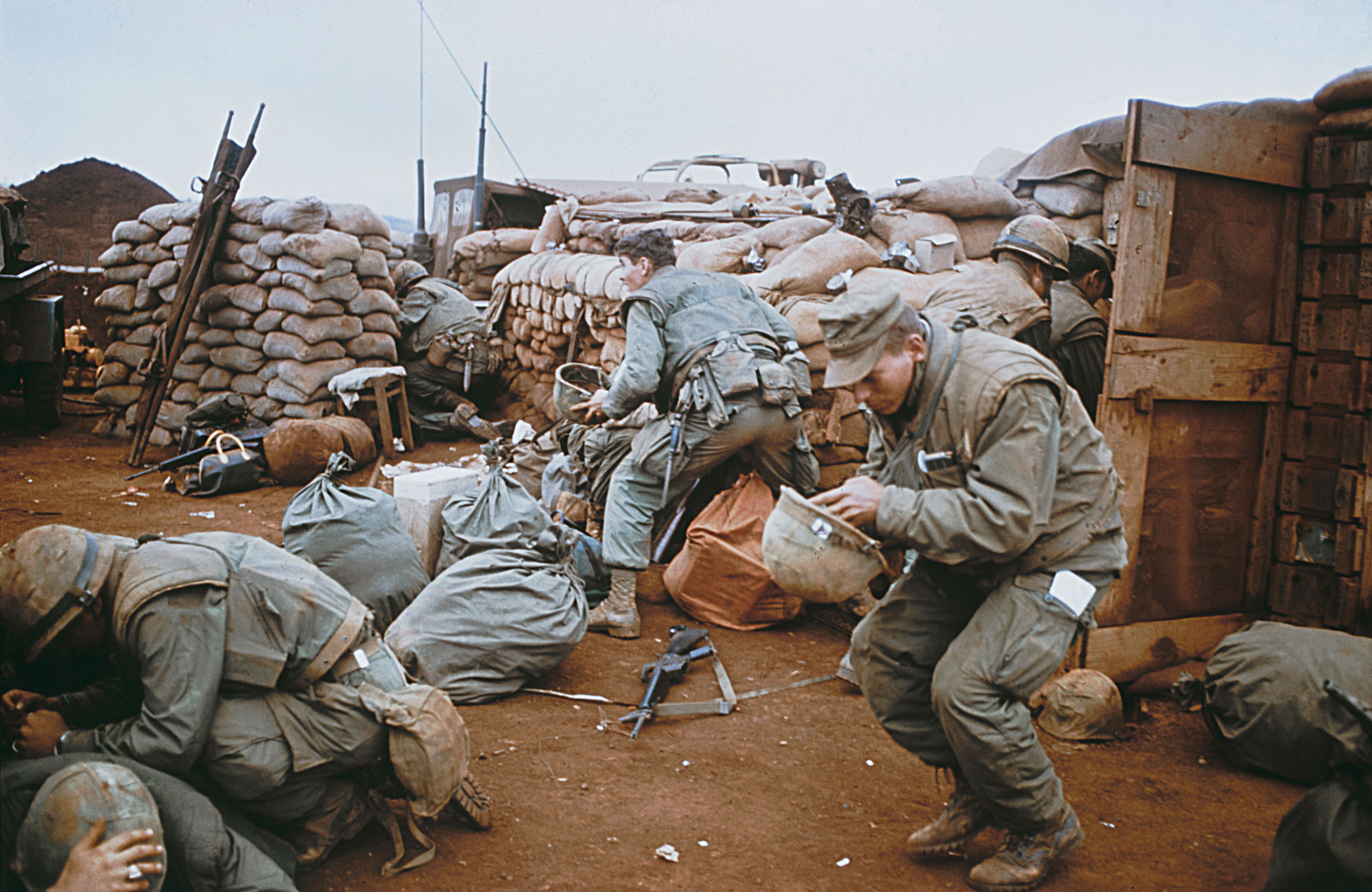At approximately 4 a.m. on Jan. 21, 1968, I stood watch as assistant operations officer in the 3rd Battalion, 26th Marine Regiment’s combat operations center at the Khe Sanh Combat Base shooting the breeze with Maj. Matt Caulfield, the battalion’s operations officer. I remember handing him a C-ration cup of coffee when we heard heart-stopping words come over the radio speaker from a lieutenant on a nearby hill: “We’re being overrun!”
Caulfield grabbed the radio handset and demanded, “What the hell’s going on?”
The Khe Sanh base was on a plateau in the northwest corner of South Vietnam just south of the Demilitarized Zone dividing it from North Vietnam and about 6 miles from the Laotian border. The base was intended to block enemy infiltration from Laos and serve as the western anchor of a linear barrier containing manned fortifications, minefields and sensors stretching from the South China Sea to Laos, a line known as “McNamara’s Wall,” a reference to Defense Secretary Robert McNamara, the barrier’s chief proponent.
The base’s perimeter consisted of bunkers and trench lines that stretched roughly in an oblong circle surrounding a 3,500-foot runway large enough to land C-130 Hercules cargo planes. Several thousand yards from the perimeter, hills 881 South, 861, 861A and 558 figured prominently in the defense of the base. Approximately 6,000 Americans defended the base perimeter and the hill positions.
In January 1968, the North Vietnamese Army cut the overland supply route to Khe Sanh, leaving the base totally dependent on aerial resupply. At the same time, the NVA surrounded the base with upward of 20,000 battle-hardened soldiers, supported by heavy artillery, rockets and mortars.
The 3rd Battalion, 26th Marines, had been airlifted to Khe Sanh in mid-December 1967 and assigned an approximately 3,000-yard-long slice of the northwest defense perimeter, known as the Red Sector.
“They [the regiment] didn’t have any room for us,” recalled 1st Lt. John T. Esslinger, executive officer of the 3rd Battalion’s Company M. “So they sent us outside the wire to the west a little bit…we build sort of an add on, an annex to the base. We extended the wire and dug our holes and that’s where we lived.”
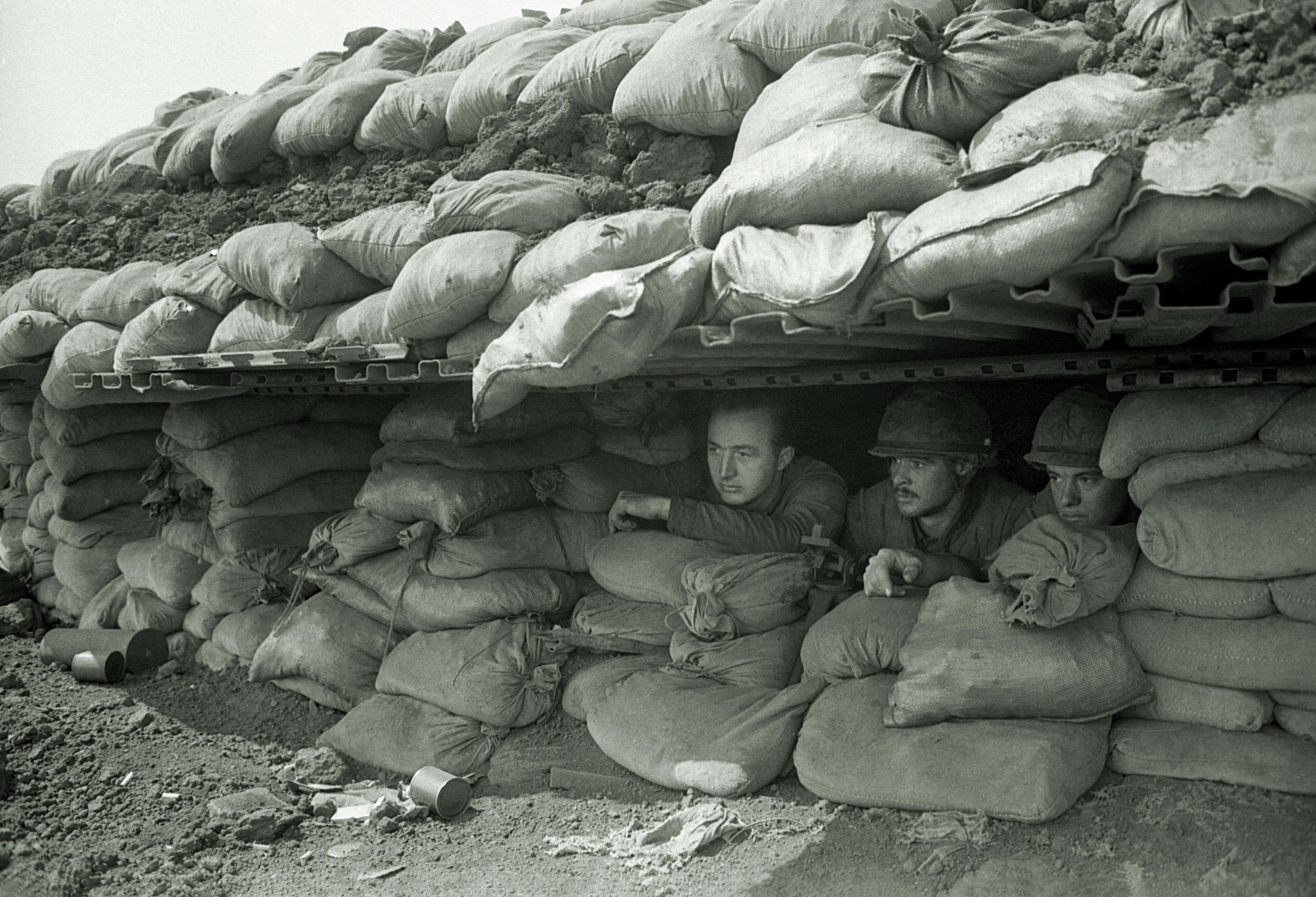
The 3rd Battalion’s combat operations center was in the only grove of trees in that portion of the base. The battalion logistics officer had been able to bribe a Navy Seabee into digging a rectangular pit with his front-end loader. The pit, some 12-feet deep, 8-feet wide and 20-feet long, was just large enough to accommodate the battalion commander, his staff and radio operators, together with about 15 to 20 men.
The operations center was “roofed” with 2-inch-thick perforated aluminum planks (intended to be runway matting), reinforced with crushed rock, expended artillery shells and layers of sandbags, making the overhead cover at least 5 feet thick. This would easily protect us from NVA mortar fire. Unfortunately, as the siege progressed the NVA brought in heavy artillery—122 mm and 152 mm guns, as well as 122 mm rockets—along with 120 mm and 82 mm mortars. A final layer of 2-inch plywood sheets was placed 6 feet over the entire roof area.
Once a 152 mm shell landed on the hardened crushed rock main road running through the base. I was told to survey the resulting hole to determine what the battalion should do to protect itself. I stared at the huge crater, 6 feet deep and 8 feet in diameter, compared it to our small entrenching tools and reported jokingly to the battalion executive officer that we should surrender!
As a further protective measure our battalion instituted a policy that no vehicles were allowed into the grove of trees—only foot traffic was permitted. We were concerned that NVA observers on the high ground might spot vehicular traffic and identify the area as a command post. Finally, a general purpose tent and camouflage netting were erected over the operations center.
From this underground bunker, the command group and staff—battalion commander, executive officer, operations officer, intelligence officer—directed the widely dispersed rifle companies. Company I and two platoons of Company M occupied Hill 881 South; 2 miles east Company K and two platoons of Company A, 1st Battalion, 26th Marines, held Hill 861; and 500 yards to the east Company E, 2nd Battalion, 26th Marines held Hill 861A.
Those three hills, along with the 3,000-foot-high Dong Tri Mountain, Hill 881 North and Hill 558, dominated the Khe Sanh Plateau and would enable the regiment to control the high ground overlooking the base. Company L of the 3rd Battalion defended the combat base’s Red Sector, tying in with the 1st Battalion of the 26th Marines on the right flank and the U.S. Army’s forward operating base on the left.
The battalion combat operations center maintained radio communications with the hill positions, as well as the 26th Marines regimental command post and supporting arms radio networks.
A hand-lettered sign was placed above the radio operators’ bench. During the day, its wording was turned toward the dirt wall of the bunker and not visible, but at night the sign was turned over and revealed a tongue-in-cheek response to the imminent threat of an NVA ground assault: “Tonight’s the Night.”
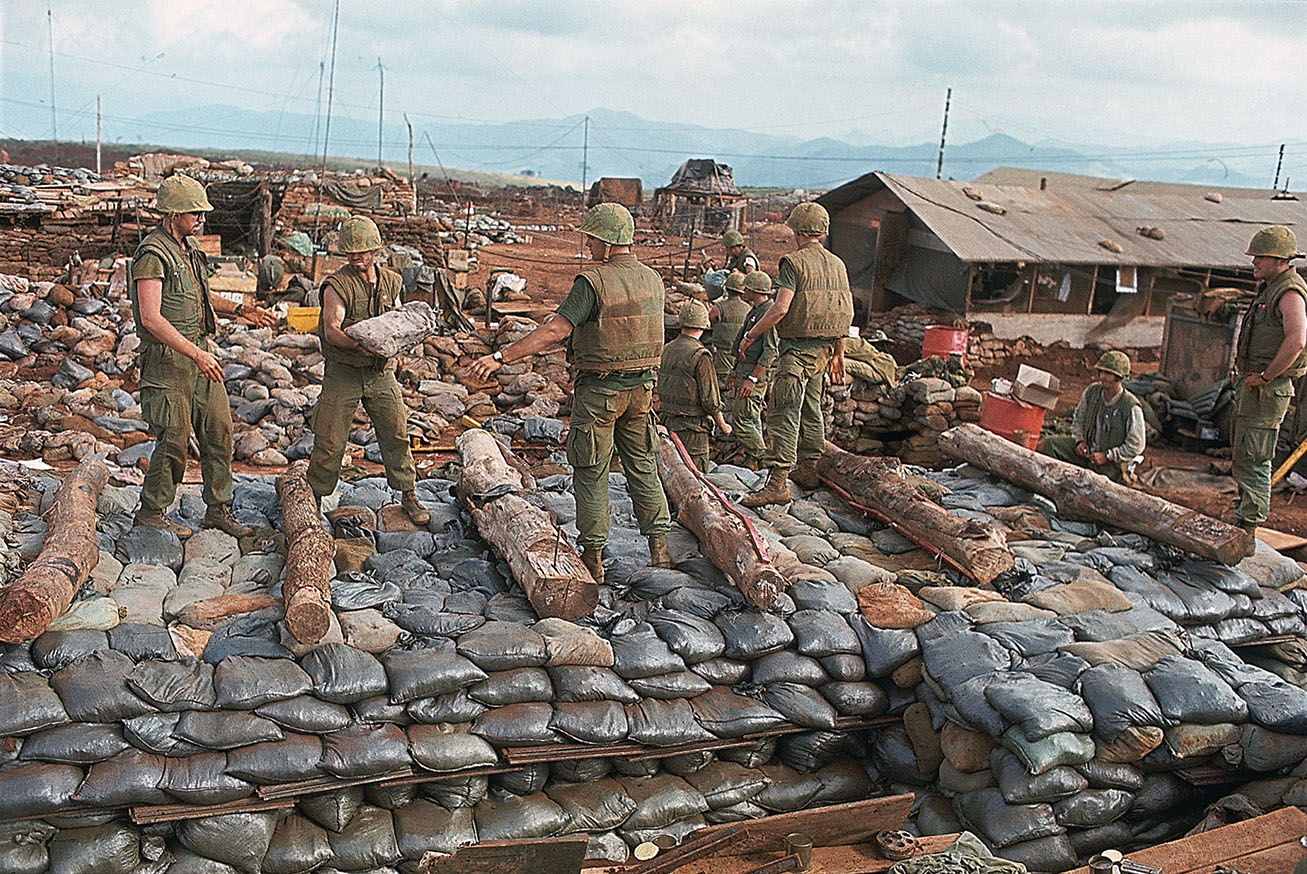
Sometime around 1 a.m., Jan. 2, a Company L listening post reported six NVA had just crept by. A reaction force was sent out and, together with the listening post men, swept the area. They discovered five NVA and killed them. The five were officers and may have been performing a reconnaissance for a ground assault. An enemy captive later reported that an NVA lieutenant colonel was one of the dead.
The night of Jan. 21 several NVA “sappers,” an elite assault force, attempted to breach the wire in front of Company L. They came under fire, and 14 bodies were observed being dragged away.
On Hill 861, as sounds of small arms and machine gun fire, explosions and muffled shouts filled the air in the pre-dawn hours of Jan. 21, K Company’s executive officer, 1st Lt. Jerry N. Saulsberry (call sign Kilo 5), responded to the
“What the hell’s going on?” question Caulfield had asked from the combat operations center.
“We’re being overrun!” Saulsberry shouted.
The major spoke to Saulsberry in an unbelievably soothing voice to calm him. However, things went wrong when Caulfield decided to finish his instructions with some football team rah-rah, saying, “OK, Kilo 5, take the ball and run with it!”
The lieutenant must have been still too anxious to comprehend Caulfield’s use of the cliche or had trouble hearing amid the gunfire and explosions.
“Did I hear you say ‘run,’ sir?” Saulsberry asked.
Caulfield shouted into the handset: “Hell no! I was just trying to encourage you to hold on.”
Saulsberry was in charge of Company K because the company’s commander, Capt. Norman
Jasper, had been seriously wounded by a rocket-propelled grenade in the first minutes of the attack and was out of action. The company first sergeant was also wounded by the same rocket. The company gunnery sergeant had been killed.
The artillery and air officers in the combat operations center requested assistance from the 26th Marines’ Fire Support Coordination Center, in the middle of the combat base, which we called “downtown ground zero.” Within minutes the regiment’s direct-support artillery battalion, 1st Battalion, 13th Marines, was in contact with Company K’s Cpl. Dennis M. Mannion, an artilleryman attached to the company to direct the support fire. “I started calling in target numbers [pre-planned artillery targets] on the ridgeline 500 yards to the west…I pulled the rounds as close as I could get them…I fired as many rounds as the 105s [howitzers] at the combat base could give us.”
Company I on Hill 881 South also began firing in support. “Our two 81 mm mortars fired several hundred rounds on that slope,” Capt. Bill Dabney, the company commander, reported. “The mortar tubes became so hot that the gunners cooled them with water, then fruit juice, and finally by urinating on them. It smelled a bit rank in the gun pits!”
The regimental fire support coordinator, Lt. Col. John A. “Band of Steel” Hennelly, directed radar-guided planes to drop ordnance on suspected NVA assembly areas around Company K’s hill position. Just before dawn two A-6 Intruder planes dropped
56 500-pound bombs on a likely assembly area, which not only dampened the enemy forces’ assault but also forced them to break contact.
At 5:30 a.m., on Jan. 21, just after the enemy had been driven from Hill 861, the NVA unleashed a terrifying artillery and rocket bombardment on the Khe Sanh base, beginning a 77-day siege. Enemy shells hit all around the operations center. Others hit the 1,500-ton ammunition dump on the eastern end of the runway, setting it off with a thunderous roar and sending unexploded ordnance hurtling through the battalion area.
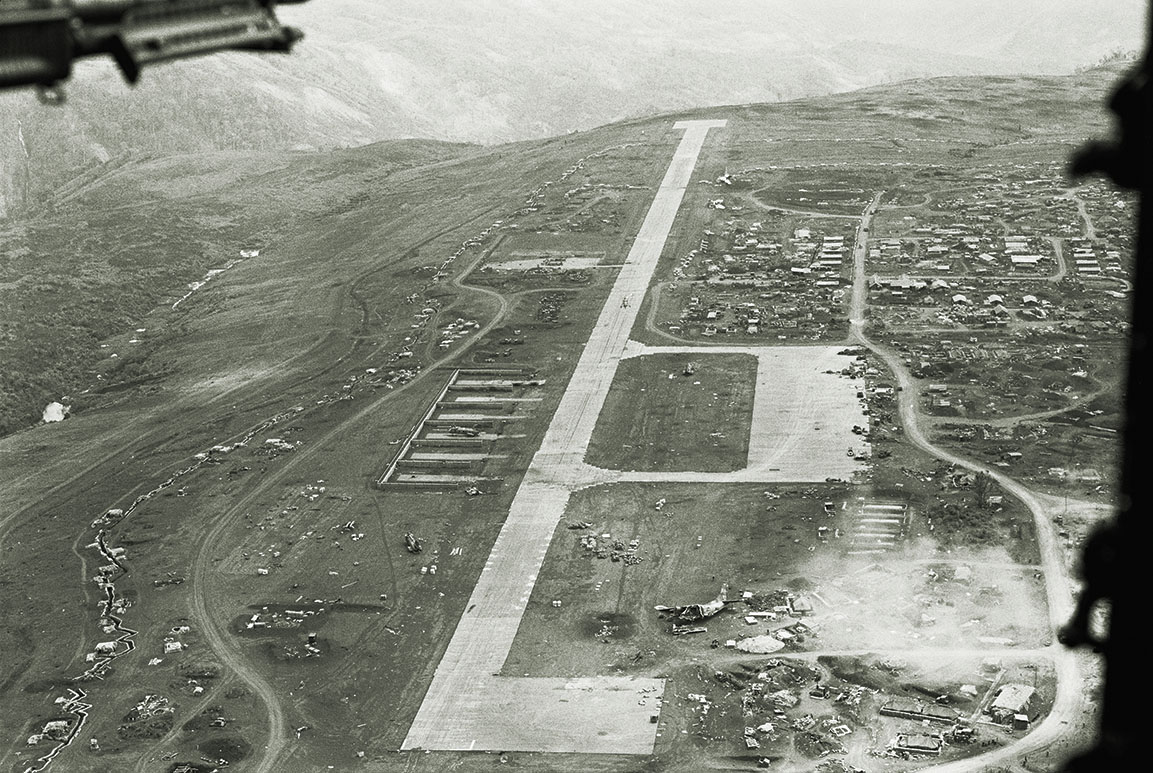
The solid thud of a 30-pound shell striking the ground in the darkness was unnerving. Making matters worse, the regiment’s supply of tear gas was blown up and the chemical saturated the air, forcing everyone to wear gas masks…at least those who still carried them.
In the following weeks, the entire combat base and the hill positions were hit all hours of the day and night by various combinations of mortar, artillery, rocket and recoilless rifle fire.
The NVA attacked Company E of the 2nd Battalion on Hill 861A at 4 a.m. on Feb. 5. A sapper unit armed with Chicom grenades (long-handled grenades modeled after those made by Chinese communists) and bangalore torpedoes (metal tubing filled with explosives) preceded an infantry attack by approximately 200 troops. Companies I and K of the 3rd Battalion supported Company E with 81 mm and 60 mm mortar fire, which helped disperse the enemy. By 6:30 a.m., Company E had beaten back the attack using small arms and aggressive hand-to-hand combat. Seven Marines were killed and 24 wounded, while the NVA lost 109 killed.
On Feb. 15, between 11 a.m. and 5 p.m., the NVA struck the base with 1,307 artillery and rocket rounds. A seemingly unending succession of casualties had to be evacuated to Company C, 3rd Medical Battalion, at downtown ground zero. For most of us, the only protection was to burrow deeper into the plateau’s red clay.
Intelligence reported the North Vietnamese had placed heavy artillery, Soviet-made 130 mm and 152 mm guns and 122 mm rockets, across the border in the Co Roc Mountains of Laos.
Our operations center was on a straight line from the NVA fire, and the rounds came right overhead before exploding somewhere in the middle of the base. Occasionally a “short” round impacted the battalion area.
On one memorable occasion, the battalion tactical network came alive with the warning from Company I on Hill 881 South: “Arty, arty, arty, Co Roc Mountain, 220 degrees.” Company I, some 4 miles west of the base, was first to hear the round and broadcast a warning over the radio network, which many units monitored.
Sirens and horns sounded all over the base, giving everyone several precious seconds to find cover—often the margin between life and death. The warning got to be Pavlovian. At the first note all hands scrambled for cover.
I wondered where that SOB was going to hit. Suddenly there was a terrific explosion, the generator lights went out, and thick dust filled the operations center. Everything went deathly quiet. The heavy stench of the shell’s cordite explosive material permeated the air. Someone shouted, “Is everybody OK?”
After verifying there were no casualties, Caulfield and I went outside and saw a gaping hole in the operations center’s tent covering, which was also perforated by shrapnel. About 4 feet of the center’s roof was gouged out.
The bunker had taken a direct hit from a heavy-caliber round, which hit the plywood and exploded, then took out part of the roof. If the plywood had not detonated the shell, the round would have penetrated the bunker’s roof—and everyone in the close confines of the space in the operations center would have been killed from shrapnel or concussion.
Two unconscious Marines lay just outside the entrance of the tent. Later we learned that they were about to enter when the shell exploded. Fortunately, the angle of the blast was away from them. Neither was hurt except for minor burns, scratches and headaches. Upon coming to, one looked up and remarked, “Don’t mean nuthin,” which was a standard sarcastic response to truly frightening combat experiences.
Others weren’t so lucky. One day a radio operator had to make a “head call.” Another man took his place. After a long interval, someone took notice and asked about the man who went to the latrine. It turned out the Marine had stepped out of the bunker just as an incoming round hit close to the operations center. He was wounded and evacuated before we even knew what had happened. On another day, a mortar round clipped several Marines close to the entrance of the operations center.
Everyone adopted what we called the “Khe Sanh Shuffle” or “Khe Sanh Two-Step.” Just about anyone who was walking above ground held his helmet under an arm so it would be easier for him hear an arriving shell. All of us kept an ear cocked toward Laos in the west, where most of the NVA artillery was positioned.
Our senses were finely tuned. We would stand around talking with our helmets tucked under our arms until someone said, “Shhh” or “Stop talking.” If nothing more was heard after a few seconds, the conversation resumed. If there was “something” in the air, everyone suddenly dashed for cover. It was automatic. If someone started running, everyone joined in.
As a result of the close calls, the battalion executive officer and I established a second combat operations center in an old above-ground bunker some distance away. We remodeled it, adding more sandbags and digging it deeper—much deeper! We occupied the bunker at night, but during the day maintained watches in the primary operations center.
As the siege developed, the NVA blockaded the road into the base. Supplies could be delivered only by cargo aircraft. Initially, the supply planes were primarily C-130 Hercules and C-123 Provider transports. However, in mid-February the runway closed after a Marine KC-130 was struck by anti-aircraft fire and crashed, killing six Marines onboard.
Using an alternative delivery method, the Air Force air-dropped containers into a zone in front of the battalion lines. Every morning, a team from the 1st Battalion, 9th Marine Regiment, swept the drop zone to ensure the NVA hadn’t moved in during the night. We could see the drop zone from the operations center.
Supplying the outlying hill positions required an innovative approach because the NVA ringed them with anti-aircraft weapons. After several helicopters were shot down, the 1st Marine Air Wing instituted “Super Gaggle,” an air task force consisting of eight to 16 resupply CH-46 Sea Knight helicopters, accompanied by about a dozen A-4 Skyhawk attack aircraft and four Huey gunships flying cover, a Marine KC-130 to refuel the aircraft and a TA-4F Skyhawk with a “tactical air coordinator” in the back seat to orchestrate the entire affair.
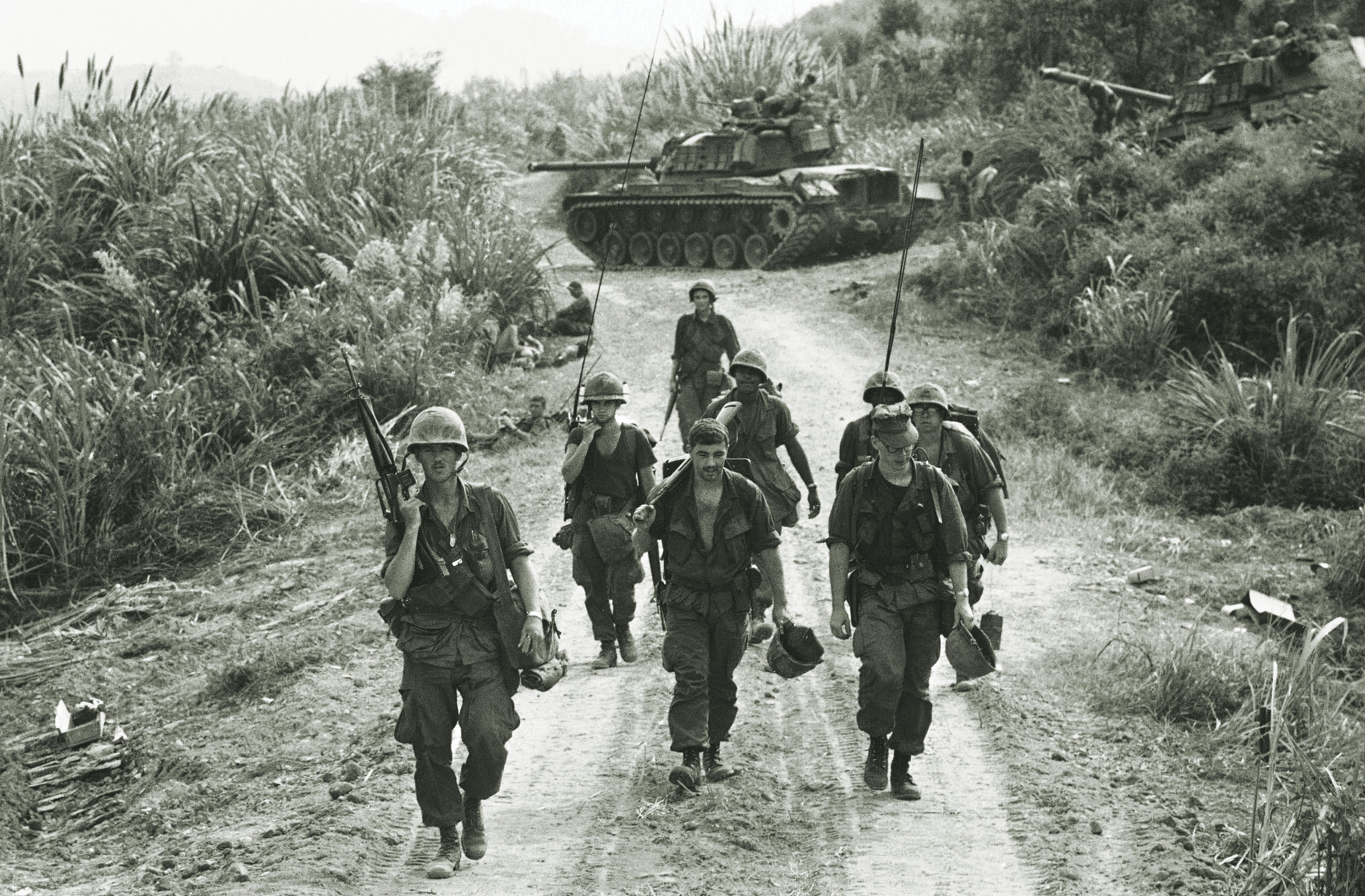
In a typical “Super Gaggle” mission, a TA-4 flew first to Khe Sanh on weather reconnaissance. When it reported favorable conditions, the other aircraft launched from various bases in northern South Vietnam. The A-4s took off from Chu Lai en route to Khe Sanh. The helicopters departed Quang Tri, en route to Dong Ha, where supplies waited.
After picking up their loads and carrying them underneath in especially designed cargo slings, the helicopters began the short trip to Khe Sanh flying on instruments and then letting down through a hole in the cloud cover.
Just before the helicopters arrived, four A-4s struck enemy positions with napalm and two others saturated anti-aircraft positions with tear gas from spray tanks. About 30 seconds before the helicopters’ final approach to the designated hills, two A-4s laid a smoke screen on both sides of the planned flight path. As the helicopters flew in behind the smoke, four more Skyhawks carrying bombs, rockets and 20 mm cannons suppressed known and suspected North Vietnamese gun positions.
As soon as smoke was laid, helicopters from Marine Medium Helicopter Squadron HMM-364, the “Purple Foxes,” would appear with the sling loads brought from Dong Ha—10 birds in two strings of five just above the smoke. They flew parallel to the hill, usually to the south since wind was usually from the north. They came into five zones on the hill, released their loads and beat feet. One bird in the second echelon was designated to land in a zone that we would have ready, drop off mail and replacement Marines, and pick up casualties. Only two CH-46s fell to enemy fire during the “Super Gaggle” missions. In both cases, the Hueys picked up the crews immediately.
On April 8, Operation Pegasus, an overland and air assault mission involving the Marines, U.S. Army and South Vietnamese troops, broke through the North Vietnamese encirclement and lifted the siege.
The 3rd Battalion, 26th Marines, had some unfinished business, however. On April 7-8 the command group and Company L were airlifted to Hill 881 South to prepare an attack on Hill 881 North. Shortly after midnight on April 14, all four of the battalion’s companies advanced against the hill under a massive 2,000-round artillery barrage. At 2:28 p.m., the Marines raised the Stars and Stripes over the smoking hilltop. The capture of Hill 881 North was the 3rd Battalion’s last battle in the Khe Sanh area. V
Dick Camp retired from the Marine Corps in 1988 as a colonel after serving 26 years. He served in Vietnam 1967-68 as an infantry company commander and aide de camp to Maj. Gen. Raymond G. Davis. Camp, who lives in Fredericksburg, Virginia, has written 15 books and more than 100 articles in military magazines.
For more stories from Vietnam magazine, subscribe here and visit us on Facebook:


